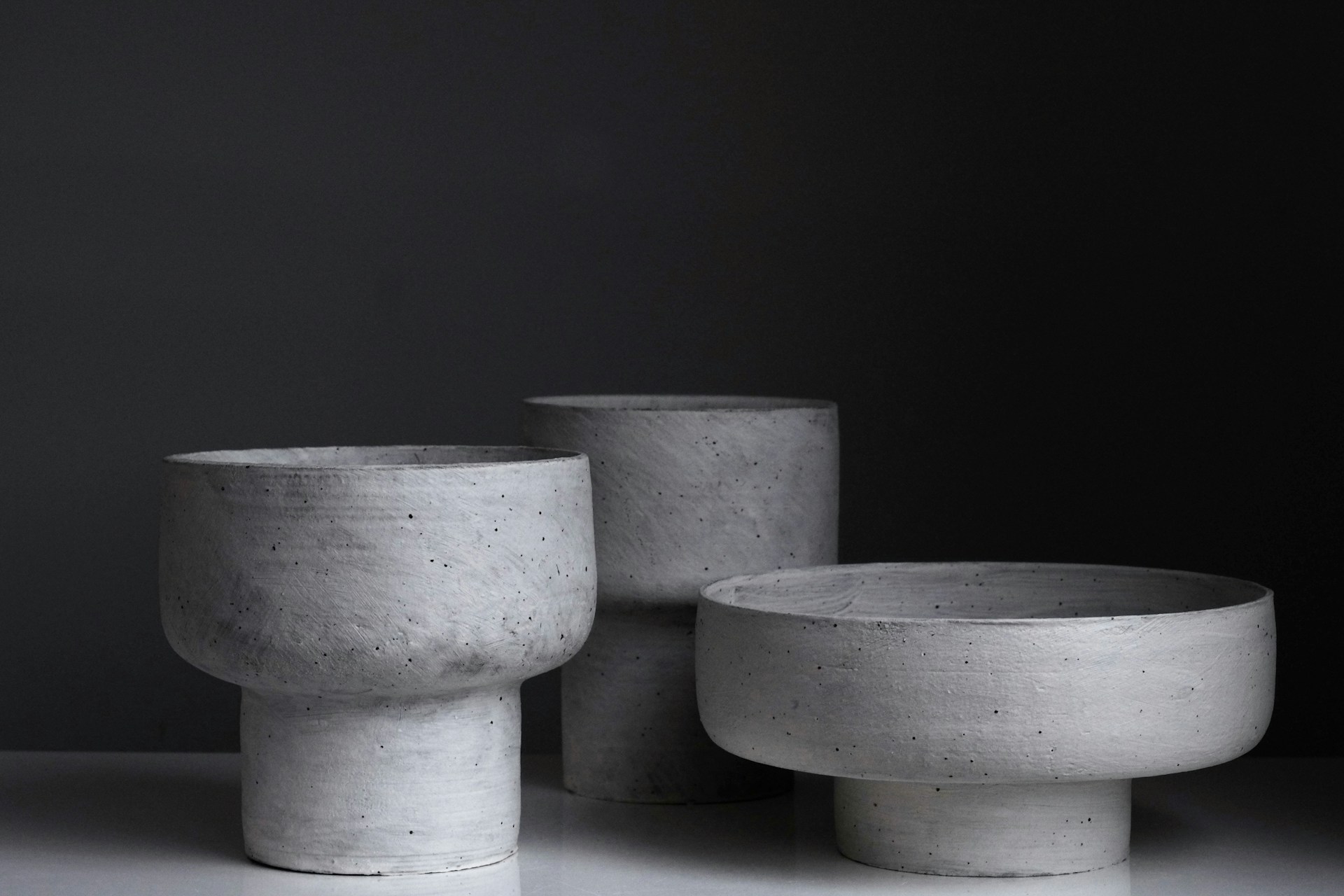Head researcher Dr. Saeed Almishal, a materials scientist at Pennsylvania State University, has developed a simplified yet transformative method to stabilize seven new ceramic materials known as high-entropy oxides (HEOs). His approach, which centers on reducing oxygen during synthesis, provides a clear and practical solution to a problem that has challenged materials researchers for years how to incorporate unstable transition metals such as manganese and iron into a single-phase ceramic structure. The work, conducted in collaboration with Penn State’s materials science team and researchers at Virginia Tech, offers an adaptable framework for synthesizing complex oxides that were once thought too unstable to exist in a controlled form.
Almishal, S. S. I., Furst, M., Tan, Y., Sivak, J. T., Bejger, G., Petruska, J., Ayyagari, S. V. G., Srikanth, D., Alem, N., Rost, C. M., Sinnott, S. B., Chen, L.-Q., & Maria, J.-P. (2025). Thermodynamics-inspired high-entropy oxide synthesis. Nature Communications, 16(1), 8211. https://doi.org/10.1038/s41467-025-63567-z
High-entropy oxides are a relatively new class of ceramics characterized by the inclusion of five or more different metallic elements within one stable crystalline lattice. This combination increases the configurational entropy, which can in turn stabilize materials that would otherwise separate into multiple phases. These materials have attracted strong interest because of their potential applications in areas such as energy storage, magnetic devices, catalysis, and protective coatings. Yet despite their promise, developing new HEOs has been constrained by thermodynamic barriers that make certain elements difficult to combine.
Dr. Saeed Almishal, a materials scientist at Pennsylvania State University stated,
“I am so grateful for the opportunities that I have had on this project and to be involved in every step of the research and publication process. Being able to present this material to a broad audience as an invited talk reflects my involvement and the excellent guidance I have received from my mentors. It means a lot to me to develop important communication skills as an undergraduate student, and I look forward to pushing myself further in the future.”
Two elements in particular manganese and iron are notoriously difficult to stabilize within high-entropy oxide systems. Under normal atmospheric conditions, these metals readily oxidize to higher valence states, causing phase instability and disrupting the lattice. For many years, researchers attempting to incorporate manganese and iron into rock-salt structures, a common crystal type for HEOs, encountered repeated failures as the materials would either decompose or fail to form a single phase.
Dr. Almishal and his colleagues approached this challenge from a thermodynamic perspective rather than a purely empirical one. By examining how oxygen behaves during synthesis, they identified that the issue was not merely the combination of metals but the oxygen environment itself. Reducing the amount of oxygen available in the furnace atmosphere prevented manganese and iron atoms from over-oxidizing, allowing them to remain in the more stable divalent (2+) oxidation state needed for rock-salt formation.
The central innovation of the Penn State team lies in their oxygen control framework, a method grounded in the thermodynamics of oxide formation. Instead of introducing complex or costly synthesis techniques, they used a straightforward adjustment to the oxygen chemical potential effectively controlling how much oxygen interacts with the reacting metals during heating.
During the synthesis process, ceramic powders containing magnesium, cobalt, nickel, manganese, and iron were placed in a tube furnace under a carefully controlled low-oxygen atmosphere. By lowering the oxygen content in the furnace, the team limited the tendency of manganese and iron to collect additional oxygen atoms. This control step allowed both elements to remain in the desired oxidation state, resulting in the successful stabilization of seven unique high-entropy oxide compositions.
Dr. Almishal’s first success came from a composition he designated J52, which consisted of magnesium, cobalt, nickel, manganese, and iron. The success of J52 demonstrated that with precise oxygen regulation, previously unstable metal combinations could coexist in a single, uniform structure. Building on this result, the team employed computational tools including machine learning models trained to predict thermodynamic behavior, to rapidly identify other combinations that could be stabilized under similar conditions. This data-driven approach produced six additional viable compositions, bringing the total to seven new high-entropy oxides.
While the experimental synthesis was central to the breakthrough, the research also showcased how artificial intelligence can accelerate materials discovery. Using newly developed machine learning algorithms, Dr. Almishal’s group screened thousands of possible metal combinations in seconds. The models evaluated how different metals would interact thermodynamically when the oxygen potential was reduced, identifying compositions most likely to form single-phase ceramics.
The computational predictions were then tested experimentally in the lab. Undergraduate students played an active role in preparing, pressing, and sintering ceramic pellets from the selected compositions. These hands-on experiments not only confirmed the computational predictions but also gave young researchers valuable exposure to real-world materials development.
To confirm that the newly synthesized ceramics had indeed achieved stable configurations, the team collaborated with researchers from Virginia Tech to conduct advanced imaging and spectroscopy tests. Using X-ray absorption spectroscopy, they analyzed how X-rays were absorbed by the atoms in the material. These measurements provided direct evidence that manganese and iron were stabilized in the 2+ oxidation state.
Additional analyses, including X-ray diffraction and energy-dispersive spectroscopy, confirmed that all seven ceramics exhibited a homogeneous rock-salt crystal structure and consistent elemental distribution. This verification was critical to demonstrate that the materials were not mixtures of multiple phases but true single-phase high-entropy oxides.
The thermodynamic model guiding this work also introduced a useful concept known as oxygen chemical potential overlap. This parameter describes how well different metal oxides can coexist under similar oxygen conditions. When the stability ranges of different oxides overlap, it becomes thermodynamically favorable for them to form a unified structure. This principle, the researchers suggest, may become a valuable tool for predicting and designing new materials across a wide range of oxide systems.
The successful stabilization of manganese and iron in rock-salt high-entropy oxides has broad implications. These metals are not only abundant and cost-effective but also bring valuable magnetic and electronic properties that could be useful in a variety of applications. By making these elements accessible to HEO design, the team has expanded the potential functionality of future ceramics.
Possible applications include high-temperature protective coatings, magnetic and electronic components, and energy storage systems such as solid-state batteries and fuel cells. Because the synthesis method is relatively simple requiring only a controlled atmosphere rather than exotic equipment it could be readily adopted in industrial settings.
Furthermore, the thermodynamic framework proposed by Dr. Almishal’s team is composition-agnostic, meaning it can be applied beyond rock-salt structures to other types of oxides. This adaptability opens doors to exploring entirely new material families that were previously considered impractical to synthesize.
The Penn State team plans to investigate the magnetic and electrical properties of the newly developed ceramics, which may reveal additional functionalities. The researchers also intend to extend the oxygen control framework to other complex oxide systems, including perovskites and spinels, which present their own stability challenges.
Undergraduate researcher Matthew Furst, who played an integral role in the experimental phase, was invited to present the group’s findings at the American Ceramic Society’s Annual Meeting with Materials Science and Technology 2025 in Columbus, Ohio. This recognition, typically reserved for senior researchers, underscores the impact and accessibility of the work.
Dr. Almishal’s approach underscores a broader shift in materials science: the move toward controlled simplicity. By focusing on fundamental parameters such as oxygen potential and thermodynamic balance, the team demonstrated that what often seems like a complex synthesis problem can sometimes be solved through a careful understanding of first principles.
The study has already attracted significant attention within the materials community, not for its complexity but for its elegance. Researchers see it as a model of how integrating thermodynamics, computation, and controlled experimentation can lead to efficient materials discovery. The paper’s reception suggests that the principles outlined could guide the design of other chemically disordered or high-entropy systems, helping scientists move beyond empirical trial-and-error approaches.
The development of seven new high-entropy oxide ceramics through controlled oxygen reduction is more than an incremental materials discovery it is a demonstration of how thermodynamic insight and computational precision can combine to solve persistent challenges in ceramic science. Dr. Saeed Almishal’s work at Penn State provides both a practical synthesis method and a conceptual framework that redefines how stability can be engineered in complex oxide materials.
By highlighting the power of oxygen control in ceramic synthesis, this research sets the stage for a new generation of functional materials that can be fine-tuned for performance and durability. The next steps, which include detailed testing of magnetic and transport properties, may ultimately confirm whether these simple yet stable oxides can move from the laboratory into practical use across energy, electronics, and manufacturing industries.

Adrian graduated with a Masters Degree (1st Class Honours) in Chemical Engineering from Chester University along with Harris. His master’s research aimed to develop a standardadised clean water oxygenation transfer procedure to test bubble diffusers that are currently used in the wastewater industry commercial market. He has also undergone placments in both US and China primarely focused within the R&D department and is an associate member of the Institute of Chemical Engineers (IChemE).



